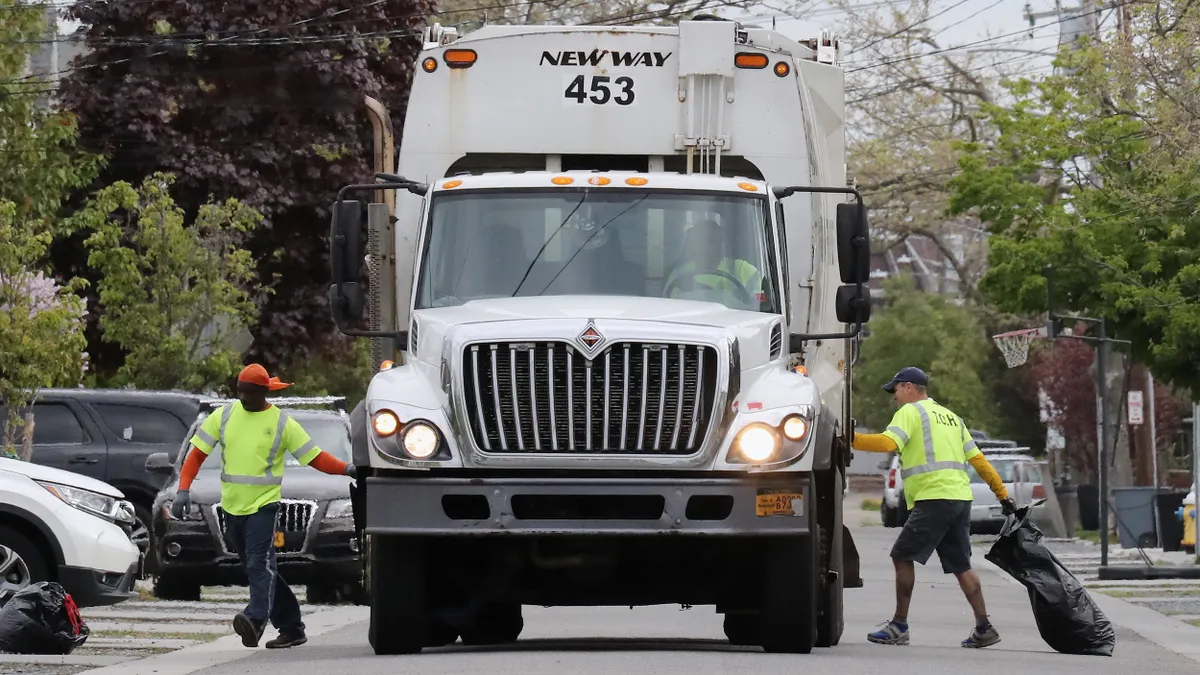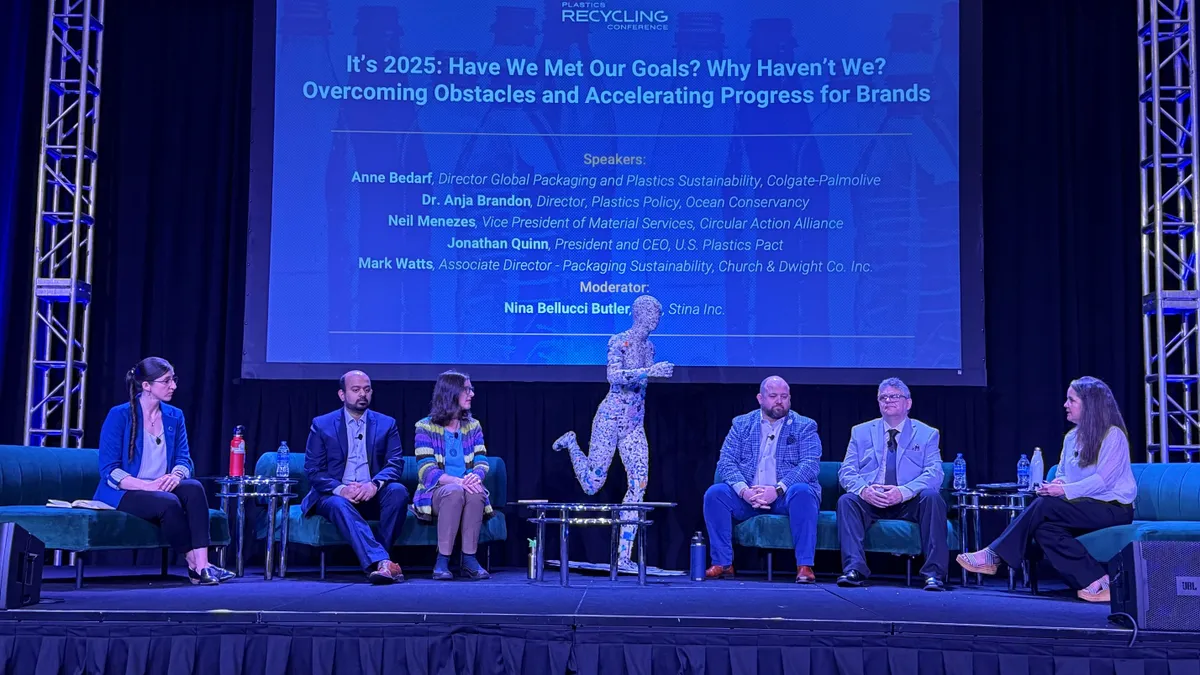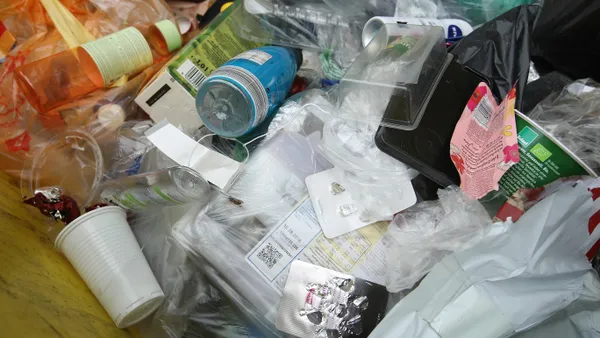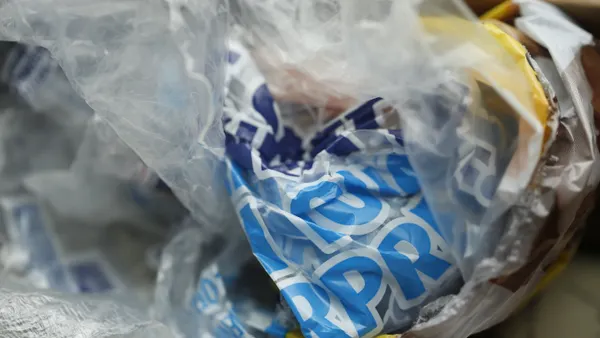Dive Brief:
- Results from a study by international market research company Smithers Pira reveal that sustainable packaging is being demanded not only by consumers, but also by manufacturers and retailers, Environmental Leader reported last week.
- Plastic packaging in particular is under the gun throughout the supply chain, from its beginning as a raw material to its end-stage recycling.
- Factors included in the consideration of sustainability are the amount of emissions released into to air and water (including carbon dioxide), the amounts of energy and water consumed in its production and the methods of disposal and resulting environmental recovery rate.
Dive Insight:
The sustainable packaging movement has moved beyond simply bringing one's own bags. Now, retailers are demanding renewable resource materials from packaging manufacturers, increasing the pressure to develop and provide sustainable alternatives.
Target, for example, is supporting several sustainability initiatives including eliminating the use of certain chemicals and investing $5 million in green chemistry over the next five years. Packaging developers are responding accordingly, understanding that with Target's nearly 1,100 U.S. stores, it behooves them to do so. Companies like Sealed Air go so far as to post their efforts, which include reductions in water consumption (34.6% since 2006); absolute plastic waste to landfills (39.1%), and greenhouse gas emissions (28.6%).
Yet, sustainable packaging is not limited to the materials being used. Improved labeling and use of package space can subtly drive consumers to avert waste altogether.
A few Wal-Mart initiatives show how including recycling instructions on labels and better rationing meals (say, cold meats) to what consumers will use can go a long way toward sustainability. In each of these cases, though, the support of the retailers' suppliers is essential to ensure success.










